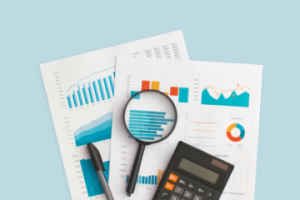The customer’s perception is your reality. – Kate Zabriskie
The Story of The Economist Premium Subscriptions
Way back in the 2000s, The Economist, as part of its plan to expand its digital subscription base, launched two subscription plans – a $59 one-year subscription plan that provided access to its online content only, and a $125 one-year subscription plan that offered not just its online content, but also provided a one-year subscription to all its print editions. Clearly, The Economist wanted their customers to choose the second option. The math was simple as the economics of the second option was better. 52 print editions at an extra cost of just above a dollar per edition, which was far less than the actual cost of the print edition. Yet, the intelligent customers decided against the second plan and opted in mass for the first plan. And the team at The Economist was quite flabbergasted.
This is when Dan Ariely, author of Predictably Irrational, decided to investigate further. He used two groups of 100 MIT students to understand this curious phenomenon better. When he gave the same two options that I mentioned earlier to the first group (see Figure 1), nearly 68% people selected the first option, even when the second option made more sense. For the second control group, Dan made a small change. He gave three options (see Figure 2). The first option was similar to the first option in the previous group. But the second option was different. The option gave the users a chance to subscribe to a print only plan where the customers would get all 52 editions of the magazine at the cost of $125 a year. This was followed by a third option which offered the print edition and web access at the same cost of $125 a year. Clearly, it did not make sense to offer the third option at the same cost as the second option and was a steal.
And the results were on expected lines. 84% of the people in the second group chose the $125 plan which provided access to both print edition and the web subscription. 16% people chose the first plan. And NO ONE chose the second plan.
 |
 |
|
| Figure 1 | Figure 2 |
If you look closely, the second option in Figure 2 never made sense. It did not offer any value compared to the print & web subscription which was a significantly better deal compared to the print only subscription. Yet, there was no change in prices for this plan in Figure 2 compared to the prices in Figure 1. But why did more people now choose the costlier plan? The answer is simple – by offering a point of comparison, The Economist was able to create a ‘perception’ that the costlier option was not so costly after all, and in fact the better option. And perceptions matter. They define how customers look at a product, how customers react to the price, and how customers value the product or the service, even after they purchase the product.
The Importance of Perception in Price
Price perception involves how consumers interpret and evaluate the price of a product or service, considering factors such as the product’s quality, brand reputation, and competitive pricing.
The Economist used a strategy known as price anchoring – a practice which organizations use when they want customers to use a price as a reference point so that they end up purchasing products which have a higher price, in turn rewarding the organizations with greater profit. Every time we see an initial price, a discount, and the final price, we tend to use the initial price as an anchoring point. Every time a store advertises a market price, and their store price, we tend to use the market price as the anchoring point. And in each of these situations, we end up perceiving the final price as a better price, even if it may not be the case.
The way customers perceive a price can drive the sales up or down. In fact, research shows that one out of every two sales in North America is driven by the price carried by the customers in their heads.[1]
How customers perceive the price is as important as the price itself. Even if customers fail to notice specific price moves in isolation, companies must make sure customers have a good sense of how the firm’s prices compare to those of competitors. And most companies—luxury purveyors aside—want to be perceived by consumers as having lower prices, relative to competitors, than they in fact do. A store with the same prices as a competitor’s would like to be seen as having lower prices; and a retailer with average prices that are 10% higher than a key competitor’s would love to be perceived as being only 5% higher’.[2]
Remember what I told you about price, the willingness to pay, the ability to pay, and the value. Well, it turns out that two of those four factors – the value, and the willingness to pay, are driven mostly by perception. No wonder, value in these situations is always referred to as ‘perceived value’ and not ‘absolute value’.
Look around, and you can see how organizations tend to drive these perceptions to boost sales, and in many cases, increase prices also. A clothing retail store which is cramped and has too many items arranged in its shelves is not because its employees are lazy to arrange the clothes on display in a nice way, but it is because these factors give a perception to the customers of the store being a discount outlet where customers can expect to bag a deal. The Marks & Spencer outlet near your house with its wide aisles and clothes arranged neatly is not doing so because its employees have too much time in their hand to arrange the clothes, but it is because Marks & Spencer wants to share the perception of being a high-end retailer so that it can command a premium in the market.
The Price Perception Matrix
Perception is the ‘way something is regarded by somebody’. And hence, for the same reason, perception is highly individualized – my perception may differ from your perception for the same product. And it may be the same for two entirely different products.
But what influences this perception? For a moment, let us forget the concept of perception, and revisit the 4Ps of marketing – price, product, promotion, and place. These 4Ps are the fundamental factors that will decide the perception of price.
Let us also think from the perspective of the stakeholders – the customers, the organization selling the product, and the other stakeholders in the ecosystem. The perception of a price will also be based on how these stakeholders react to the price that is set.
Or in other words, the price perception is dependent on a set of six interlinked factors that can be organized into a matrix that we can call as the price perception matrix.

1Price dispersion is the variation in prices across sellers/retailers for the same item
I do not intend to cover each of these factors in detail, as the possible facets that influence these factors may be numerous but let me highlight each case.
- Price related:
- Customer related: These factors are driven mainly by the numerical price set for the product, and the reaction of the customer to these prices. The perception towards these products is mainly driven by the factors linked to the customer such as willingness to pay, ability to pay, perceived value etc.
- Organization related: These factors, though price related, are driven mostly by the organization. Price dispersion is a great example. If the price dispersion is high, i.e. – the range of prices across different sellers is very high for a particular product- the perception towards that product may vary and may even be unfavorable, especially when the customer sees the same product at a seller where the price is high (for example, the early failure of Blu-Ray devices which had high price dispersion across sellers. This also led to disparities in the availability of titles and special editions across different retailers, adding to the confusion and uncertainty among consumers).
- Ecosystem related: These are price related factors that are beyond the control of the customer and the organization, but still impact how customers perceive the price of a product. For example, if an organization launches a high price product in an industry where the prices are usually not very high, there are chances that the product may be perceived as a premium product (like the Apple iPhone) or an extremely pricey product (like Apple Lisa, a personal computer launched in 1983, where the high price created a perception of exclusivity and limited accessibility, which resulted in disappointing sales).
- Non-price related:
- Customer related: These are non-price related factors such as availability, the promotion strategy used, and the brand perception of a product that drives the price perception of a product. For example, if a customer favors a brand, then he or she may have a positive perception of the prices set by the same organization vis a vis the same price set by another organization for a similar product.
- Organization related: These are non-price related factors such as the location in which the product is sold, the packaging etc. For example, Tiffany & Co. a renowned luxury jewelry brand known for its iconic blue packaging has become synonymous with luxury, elegance, and timeless sophistication, creating a positive perception for its high price.
- Ecosystem related: These are factors that are not related to price, and are not related to the customer or the organization, but are related to the ecosystem in which the organization operates in. For example, if an organization introduces a product that launches a low-priced product in an industry dominated by a cartel known for charging high prices, the organization has a strong chance of creating a favourable price perception. Uber is a classic example of a similar organization that disrupted an entire industry with a lower price product and created a positive price perception.
We can classify each possible scenario or factor into one cell of the price perception matrix. Organizations which want to actively manage the way their prices are perceived by the customers must focus on leveraging this price perception matrix for better results.
But How Does Price Perception Impact Organizations?
The way customers perceive the price of a product, and hence decide upon the perceived value of a product can have significant impact on the business of an organization – it can make or break a sale. Let me explain some specific cases in which price perception can impact organizations’ businesses –
- Creates a halo effect:
In pricing, a halo effect refers to a cognitive bias or psychological phenomenon where a customer’s overall perception of a product influences their perception of its price. This happens when the customer’s positive perception of one aspect of a product leads them to assume positive qualities in other aspects, including its price. For example, if a customer has a positive impression of a brand due to its high-quality products, exceptional customer service, or strong brand image, they may perceive the brand’s pricing as justified and reasonable. Conversely, a negative halo effect can also occur, where a customer’s negative perception of one aspect of a product or brand influences their perception of its price negatively. The halo effect is important for organizations to understand because it affects the willingness to pay and the perceived value of the product.
- Changes the reference price:
The reference price is the price against which consumers compare the current price of a product or service to assess its value or perceived deal. The reference price formed based on their past experiences, knowledge of the market, or the typical price they expect to pay forms a benchmark and a positive price perception can be formed if the price of the product is below this reference price. The reference price also acts as an anchor and when customers see a price that is significantly lower than the reference, a positive price perception is created. This is the same when organizations offer discounts and offers for its products. The retail price usually acts as a reference point, and a discounted price creates a positive price perception. But the flip side is the fact that when organizations chase a price that is lower than the reference price, they tend to lose out on the opportunity of maximizing the profits.
- Impacts the price fairness:
Price fairness refers to consumers’ subjective judgment of whether the price they are asked to pay for a product or service is reasonable and justifiable based on their perceived value and the context of the transaction. Consumers’ perception of the fairness of a price directly impacts their overall satisfaction with a purchase. If consumers perceive a price as fair and justifiable based on the value they receive, they are more likely to be satisfied with their purchase. On the contrary, if they perceive the price as unfair or too high for the perceived value, their satisfaction may be negatively affected. This also affects the intention of a customer to purchase a product as well as has a significant impact on loyalty and repeat business. A product which is perceived to be priced fairly and has a positive price perception will be well received and can drive significant sales for the organization.
- Change in purchase plans:
The biggest impact that can happen to organizations due to a wrong price perception is not a change in reference price or change in fair price. It is when customer defers or changes his plans to purchase a product in a specific quantity at a specific date. For example, a customer, because of a wrong perception of the price, can decide to purchase a product later, or reduce the quantity of items that they purchase, or can cancel their purchase altogether. Many organizations have been severely impacted by this. Organizations must actively look at creating strategies that can help offset these changes. For example, offering discounts, or providing quantity-based discounts are a great way to offset this.
It is important to understand that a wrong price perception can create a long-lasting and unfavorable impact on an organization. For example, Apple, which is famous for its premium flagship phones, faced a setback when it launched iPhone 5c, its ‘supposedly’ cheaper variant. While it was cheaper than the usual iPhone models, it was significantly more expensive than other budget phones from its competitors. It was also perceived as too expensive due to its plastic construction and the presence of some older technology compared to the higher-end iPhone 5s. As a result, it resulted in low sales and demand, created a negative brand image, caused inventory issues and excess stock at many retailers. It forced Apple to relook at its pricing strategy for all its future phones. It also created impact on how Apple designed and developed its future models. While the iPhone 5c did not cripple Apple as a company, it did serve as a valuable lesson for the tech giant.
What Can Organizations Do to Manage Price Perception?
I propose a ten-pronged strategy for organizations to manage how customers and other stakeholders manage their price:
- Create and maintain a positive brand:
As we saw with the concept of halo effect, organizations that have a positive association with their customers tend to create a positive price perception with the customers. That is why well-known and well-received brands like Apple can launch products that are priced at a premium compared to its competitors. Organizations must work towards creating a brand that lives up to its promise and work extra hard to maintain that brand image.
- Understand the power of price psychology:
Pricing psychology is everywhere. And it is being increasingly used to impact customer behavior and drive increased sales. Very few firms try to understand it and tend to follow the crowd. But the power of using the correct psychology to set and define the right price is enormous. Organizations need to understand that each product and each customer is different, and hence they will need to adopt a pricing strategy driven by the right psychology which is apt for their product and their set of customers.
- Focus on value-based selling:
Remember the concepts of perceived value, willingness to pay, ability to pay, and price. Well, the only way organizations can hope to set a higher price and realize this higher price is when they are able to convince their customers on the higher value of their products. And to achieve this, organizations will have to focus on value-based selling, a process that focuses on selling a product by focusing on the benefits that the customer will obtain from the product. Organizations which can successfully understand this and execute this will be able to create a better price perception.
- Provide transparency and be fair:
Have you heard of Everlane, a clothing retailer? They practice transparent pricing through which they reveal the true cost of every dress, and include the mark-up that they charge. And they have been quite successful. But transparent pricing has its benefits. Transparent pricing, where businesses clearly communicate the ‘why’ behind their pricing decisions, will positively influence price fairness. When consumers understand the real factors that contribute to a product’s price, they are more likely to view it as fair and reasonable. And by being transparent, fair, and reasonable, organizations can aim to create a positive price perception, even when prices are high.
- Adopt product bundling:
Do you know why organizations prefer to sell product bundles and customers prefer product bundles? While product bundles offer a lower cost of selling for organizations, product bundles and packages offer customers with an increased perception of customer value. Bundling related items together can make customers feel they are getting more for their money, enhancing their positive price perception.
- Offer discounts and promotions:
Offers, discounts, and concepts such as limited time promotions not only create a sense of urgency, but also provide customers with a sense of getting a bargain, which is a key factor in driving a positive price perception. Moreover, it will also incentivize customers to purchase a product earlier than they had originally intended, leading to higher sales.
- Leverage the power of customer testimonials:
Positive reviews and testimonials from satisfied customers can build trust and reinforce the perception of value. Organizations must focus on showing customer feedback prominently on their website and marketing materials to showcase the positive experiences of others and this in turn can drive a positive price perception.
- Focus on customer service:
Organizations that deliver a great customer experience tick several boxes – they have a great brand, they offer great value for the price paid, and they offer peace of mind, leading to an overall positive experience. A positive experience can enhance customers’ perception of the value they receive from the products or services, making them more willing to pay higher prices. This customer service can also include concepts such as guarantees and warranties, which can instill confidence in customers that they are making a risk-free purchase. This assurance can positively impact price perception, as customers feel more comfortable paying a higher price for a product with a reliable guarantee.
- Be cognizant of reference price:
Organizations must understand the concept of reference price, and actively work towards calculating it correctly. This will enable them to set a price that is in line with the customer reference price and ensure that their costs are lower than this reference price and selling price. Through this, organizations will not just be able to deliver greater profits, but also influence price perception in a positive way.
- Be agile and ready to adjust:
It is easy to go wrong, and it is not unusual to go wrong. Organizations that are ready to accept their mistakes, and agile enough to navigate through ever evolving customer preferences will be the ones who can create a positive price perception. Organizations with agile pricing strategies monitor customer feedback, market trends, and competitors’ pricing to stay responsive to changing perceptions and demands. They adjust pricing strategies as needed to maintain positive price perception.
By implementing these strategies, organizations can effectively create a positive price perception to enhance the value of their products and services. They can also build strong relationships with customers based on trust and delight, thus boosting profits, and enhancing overall stakeholder delight.
The Final Word
The perception of price is as important as price itself. While price perception is a psychological phenomenon that has a strong intangible component attached to it, the tangible components can be chalked out using the price perception matrix. Price perception influences customer behavior and a positive price perception can influence increased sales. It can also create a better value proposition and become a strong competitive advantage thus building a better brand image and trust, and invariably a long-term impact.
Organizations that prioritize price perception and align it with customer expectations are more likely to create enduring customer relationships, achieve sustainable growth, and build a positive brand image in the eyes of customers.







